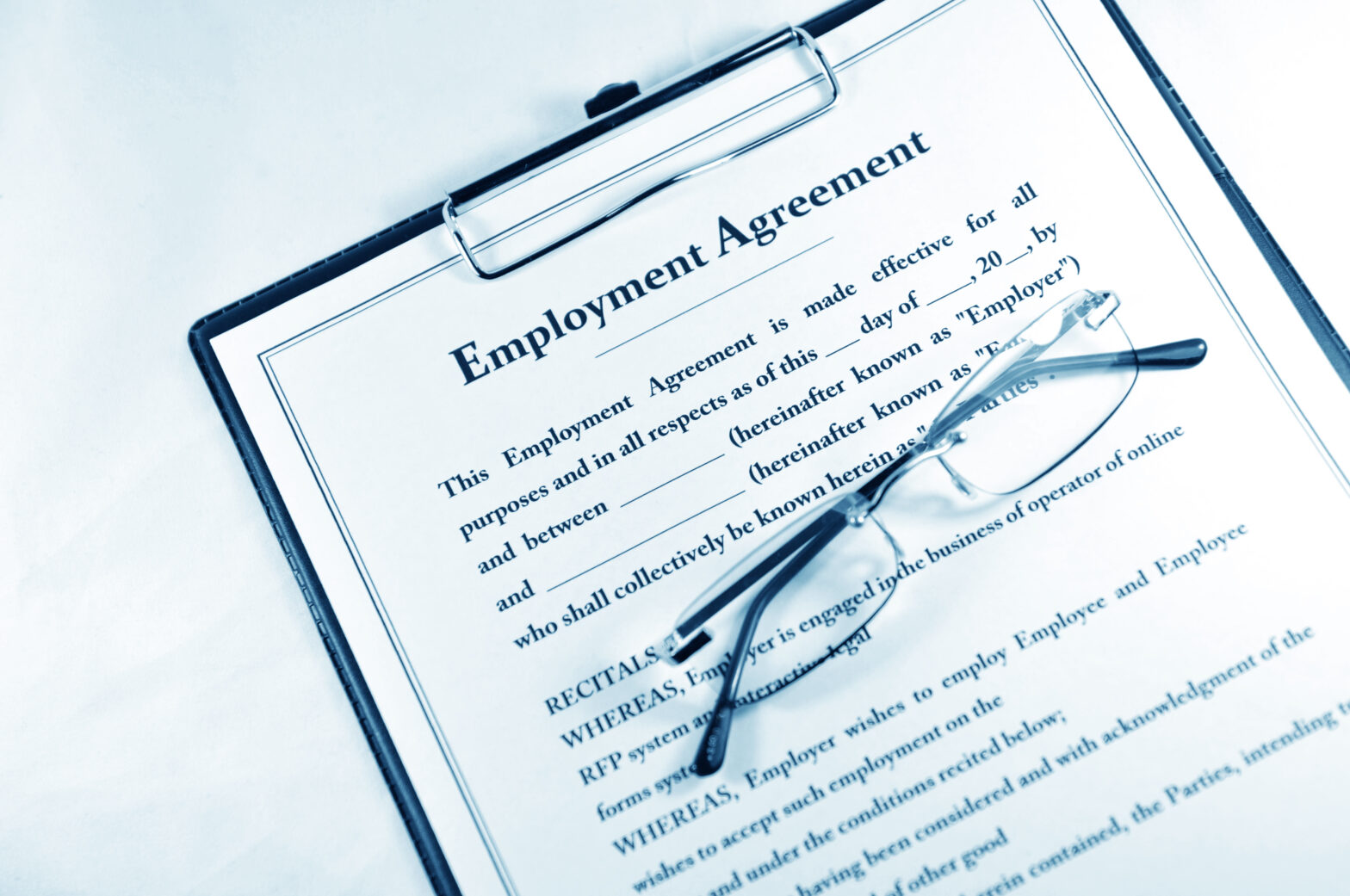One of the many consequences of Covid-19 is its persistent relative, Long Covid.
Though a relatively new condition, it’s affecting a number of people who are suffering the aftermath of having the virus.
Figures from the ONS last year reveal that one in five people diagnosed with Covid-19 were experiencing symptoms that last for five weeks or longer. One in ten had symptoms that lasted 12 weeks or longer.
In September, Public Health England also published guidance around the long-term health effects of Covid-19. It highlighted that around ten per cent of those with mild coronavirus who weren’t admitted to hospital have reported symptoms lasting more than four weeks. A number of hospitalised cases reported continuing symptoms for eight weeks or more after discharge.
With Long Covid patients reporting that they can’t do what they used to – and many of them being of working age – this could pose challenges for employers.
We’re going to take a look at the effects of Long Covid and how you as an employer can better manage employees who have the condition.
What is Long Covid?
Long Covid (also known as post Covid-19 Syndrome) follows on from having Covid-19. It can bring wide-ranging symptoms which last for weeks or months after the time of infection.
Ongoing Symptomatic Covid-19 patients will be still be exhibiting signs and symptoms 4-12 weeks after infection.
Symptoms vary in severity and can include:
- Lung disease
- Blood clots
- Breathlessness
- Extreme fatigue
- Memory loss
- Brain fog
- Protracted loss of taste and smell
- Skin rashes
The strength of the initial infection doesn’t dictate the likelihood or severity of Long Covid. Recovery time can vary as much as the symptoms, with some patients still reporting symptoms even though they were infected with Covid-19 in March 2020.
“It remains to be seen what the true long-term implications of this condition are, and employers need to be prepared to respond to this,” said David Price, CEO of Health Assured.
“In the immediate term, employers are likely to experience significant amounts of sickness absence which needs to be managed; this usually comes with extra spend on agency workers, for example, or other temporary workers to bridge the gap, or extra pressure on colleagues who need to pick up the extra work.”
Can employees with Long Covid come to work?
Once an employee’s self-isolation period is over, they are legally permitted to return to work. If they’ve got Long Covid symptoms there is no legal need for them to self-isolate so they can come into work if they’re able.
Do they have to tell me they have Long Covid?
No, they don’t. Like any other health condition, your employees aren’t under obligation to declare Long Covid. However, signs could become evident if you know they’ve had the virus.
“If an employee has been absent due to testing positive for coronavirus, this should generally put an employer on notice that the employee could be suffering from long-term effects,” said Anna Schiavetta, employment law solicitor at Howarths.
What protections do employees have? Are they covered by the Equality Act 2010?
You’ll want to tread carefully here as your employee could be classed as having a disability if their symptoms persist long-term. The Equality Act defines ‘long-term’ as lasting or likely to last for 12 months or more. The illness must also have a substantial effect on an employee’s ability to carry out day-to-day tasks.
The Equality Act does have some deemed disabilities, such as cancer, multiple sclerosis (MS) and HIV. As Long Covid is a new illness, it’s not easy to say how it could be classed in future.
“There’s very little medical clarity about how long the physical effects of Covid are likely to last and, ultimately, this question would have to be answered by an employment tribunal on the specific facts,” said Jo Moseley, employment law expert at Irwin Mitchell.
How should I approach a conversation with the employees?
Talk about the employee’s needs early on with a return-to-work meeting once they’re feeling better. Keep the discussion open and encourage them to be as honest as they can so that you can appropriately support them. Part of this meeting should be conducting risk assessments for this employee and other staff who could experience Long Covid.
If the resources are available to you, an occupational health assessment is a good idea too. An occupational health assessment is an examination done by an occupational health physician. It advises the employer on the employee’s health and make recommendations on what sort of adjustments could be made so that the working environment is safer and more comfortable for the employee. It can also assess their fitness to work.
Checks include:
- Respiratory illnesses
- Musculoskeletal assessment
- Mental health/workplace stress assessment
From then on, schedule regular meetings to check-in with your employee to see how they are doing and if there’s additional support you can give them.
Take a long view with your employee’s recovery. Multi-disciplinary rehabilitation support could be recommended depending on the severity and recovery time of their condition. This may entail psychological, physical and psychiatric services.
The key takeaway here is not to adopt a blanket approach when speaking to your employees. As you can see from the above, their symptoms could differ so you should treat each as an individual.
What if I don’t have an occupational health scheme?
A 2019 report from the Society of Occupational Health and Medicine (SOM) reveals that just 45 per cent of workers have access to an occupational health scheme.
Without occupational health, you’ll have to rely on your employee’s GP to provide a fit note and any suggestions they have about reasonable workplace adjustments.
What measures can I take to help employees?
This is largely dependent on your employee’s symptoms.
A phased return will be suitable in some cases. This could be done over five weeks – one day in the workplace on the first week, two on the second and so on.
The timing of returns should be based on the condition’s severity, but difficulty of work should be considered as well as hours worked. Think about flexible hours, part-time working, entrances that are more accessible for mobility issues and a longer lunch break.
“One of the main symptoms of Long Covid is fatigue, so particularly for those working from home, it’s important to give employees the freedom to work to their own clock when necessary, and cut down on meetings where possible,” said Nikki Thorpe, director of people and culture at Planday.
In the short-term, you can direct employees to external sources of support and information.
Social media
For all its flaws, social media has provided useful support groups since the emergence of Long Covid.
Twitter handles
You can also find relevant posts using the hashtag #LongCovid
Facebook pages
Long Covid Support Group is a private group for people with Long Covid and their carers only.
For those who don’t have Long Covid but want to know more about it, have a look at Long Covid Support.
NHS
Long Covid clinics have been rolled out across England, but not yet in Scotland, Wales and Northern Ireland. GPs can refer patients to these clinics.
Your Covid Recovery has practical advice that you can access from anywhere you have a web connection.
Government
The Government’s Fit for Work service can supplement advice given by occupational health providers or through private insurance in England and Wales. It’s also used to supplement employers’ sickness absence policy procedures.
Public Health Scotland has a separate service.
Finally, as an employer, try demonstrating personal wellbeing to your employees.
“There’s a real strength in leadership to showing your own vulnerabilities and being real with your team. Even for employees who aren’t suffering with Long Covid, working non-stop can seriously impact wellbeing, which right now needs protecting more than ever.
“By taking regular breaks, encouraging employees to get out and see the sun, or even making sure that you switch off after hours, you’re setting an important example. It will help your team build the psychological safety net to know that doing the same is encouraged,” Thorpe said.
What about paperwork?
Without a definitive diagnostic code, filling in paperwork will likely become a challenge.
“The lack of diagnostic code for Long Covid has caused some issues for both employees and employers already, when trying to correctly record the illness. An inability to correctly categorise ‘Long Covid’ means that employers may struggle to provide effective accommodations to employees,” said Kate Hindmarch, partner in employment law at Langleys Solicitors.
“The risk for those employees suffering with Long Covid, who are subject to the same procedure that is used for dealing with other illnesses, is the mismanagement of the employee’s needs, which in turn may lead to a potentially valid employment tribunal claim.”
Again, multiple sources could help you here as you’ll have a better understanding of the condition.
“Employers should make sure that all their employees have access to a wide range of support avenues in the case that they are diagnosed with Long Covid,” Hindmarch added.
What should I do if Long Covid has a significant impact on my employee’s performance?
You may be faced with a difficult decision to let an employee go if their ability to carry out their duties is seriously impaired.
Moseley says that you’ll also need to treat disability-related absences with care though. You are entitled to manage ill health and absence and a disabled employee can’t expect to be removed entirely from the scope of your absence management policy. Some policies already include provision to offset disadvantage to people with disabilities.
If yours doesn’t, consider what adjustments you can make which might include extending the trigger points and allowing a higher level of absence before you start taking action. This is particularly important if you operate a Bradford Factor (employee absence measurement) which targets employees who have frequent short-term absence, which may particularly impact some employees with Long Covid who may be fit for work one day and be completely debilitated the next day.
“Even if adjustments are made, the level of absence may reach the point where you can reasonably dismiss on the grounds of capability. However, you would need to obtain up-to-date medical evidence first, discuss this with the employee and warn them that they may be dismissed. Take advice if you’re not sure,” said Moseley.
She adds that you may also be able furlough employees who are off sick with Long Covid, as long as they are not intermittently absent. The government has said that the scheme should not to be used for those people who are ill for a short period and they can only be furloughed if you are furloughing your entire workforce, or the part of it they work in.
However, dismissal should be a last resort. Support your employee as far as you can first and remember: each case of Long Covid is different.
Read more
This change to the furlough scheme could lead to more costly redundancies





